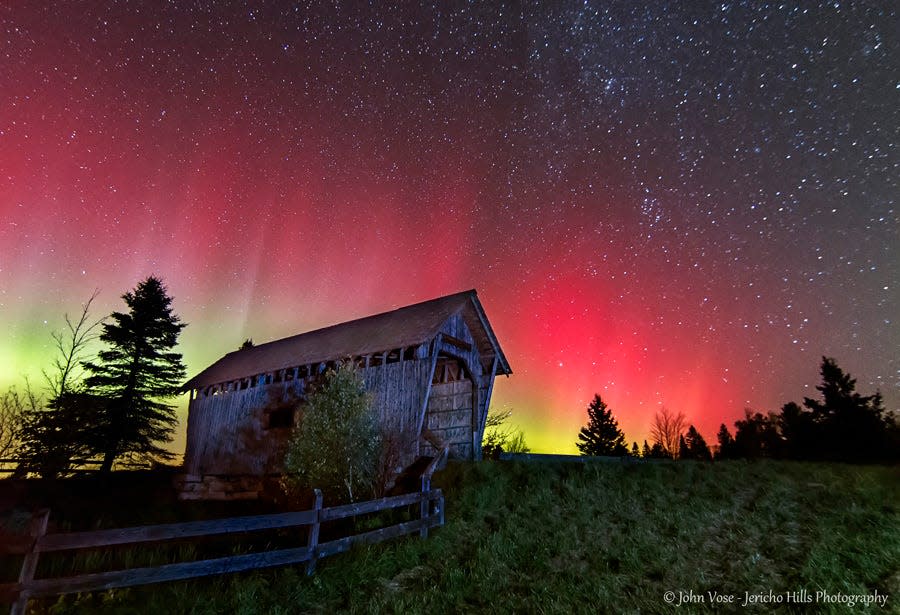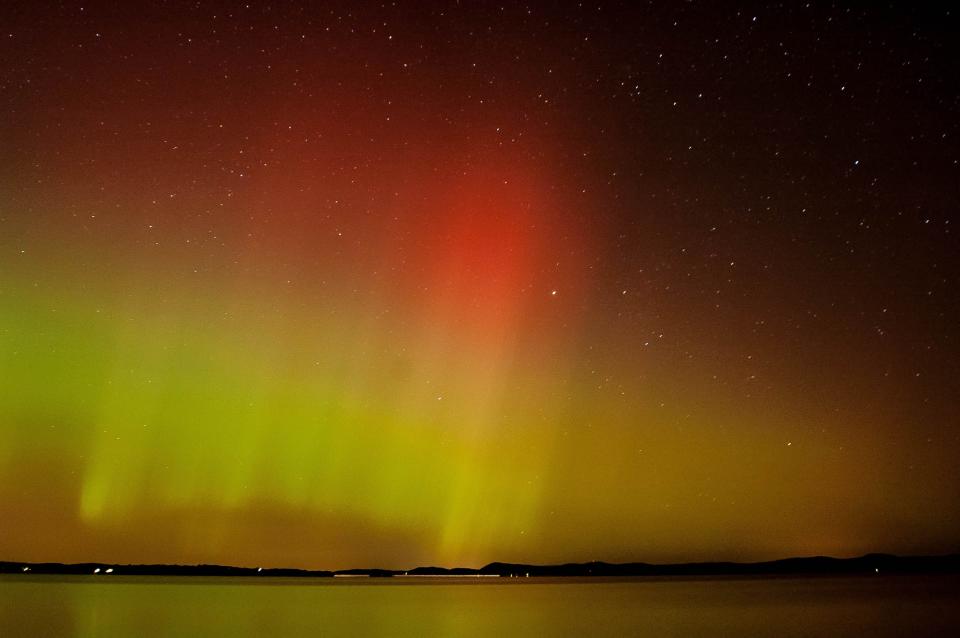Update: Northern lights change course, no longer visible in Vermont
Update: Vermonters looking forward to seeing the aurora borealis light up the night sky this week will be disappointed. The most recent forecast from the Geophysical Institute at University of Alaska Fairbanks and the Space Weather Prediction Center no longer show Vermont as a potential place where the northern lights may be visible.
Previous story
Vermonters might be north enough to see the northern lights Wednesday and Thursday night, due to a big solar storm making auroral activity visible at lower latitudes.
The Geophysical Insistute at University of Alaska Fairbanks predicts the Kp index will be at 6 on Thursday and 5 on Wednesday, meaning there is a good chance to see the celestial phenomenon in 17 states in America.
The Kp index is a metric for measuring aurora strength. Ranging from 0 to 9, anything above Kp 5 constitutes a geomagnetic storm. While visibility on Wednesday is possible, the geomagnetic storm will be stronger on Thursday, and therefore more visibility is more likely.
The Space Weather Prediction Center and the Geophysical Institute at University of Alaska Fairbanks have up-to-date aurora forecasts, so you can keep up with the latest auroral news.

Where could the northern lights appear in Vermont?
Dark locations far north, away from light pollution and with a good view to the north, offer the best chance of seeing something, says Mark Breen, senior meteorologist and planetarium director at the Fairbanks Museum and Planetarium.
Good places in and near Chittenden County to view the northern lights might include Causeway Park, Mallets Bay and Delta Park in Colchester. All far enough from Burlington to avoid light pollution and all along Lake Champlain; the green glow looks especially stunning over water.
Higher elevations such as the ski resort in Stowe might also offer a clear view as well.

What is Thursday's forecast?
As of Tuesday, July 11, the National Weather Service predicts mostly cloudy conditions Wednesday night, and storms Thursday night through Friday morning. This forecast might hinder the views, as the northern lights are best observed from under clear skies.
The moon will be in the waning crescent phase on Wednesday and Thursday night– only 17% illumination. As the moon has the potential to obstruct auroral visibility with its brightness, the waning moon will likely not be a detriment to the view. Rain and clouds remain the larger concern.
At what time will the northern nights be visible?
The best time for viewing the northern lights will be between 10 p.m. and 2 a.m. Thursday night, according to the Space Weather Prediction Center at the National Oceanic Atmospheric Administration. The aurora borealis has a a slighter potential to be visible on Wednesday night, with a Kp index of 5 as opposed to 6. For those trying to see the northern lights on Wednesday night as well, 10 p.m. - 2 a.m. will still be the best frame of time.
When was the last major northern light event in the US?
More: Past auroral activity in Vermont Pull out those cameras - you could have two chances to view the northern lights in 10 days
In late April, the sun released a burst of energy, known as Coronal Mass Ejections, towards earth, giving around 30 states the potential to see the northern lights.
Northern light events are more likely to happen this year, as the sun is getting closer to reaching its solar maximum on the 11-year solar cycle.
Sunspot activity increases as the sun reaches its peak, which increases the potential to see auroral activity at lower altitudes; sunspots are cooler than other parts of the suns surface because they form where magnetic fields are particularly strong.
The predicted peak will occur in 2025, according to the Geophysical Institute at University of Alaska Fairbanks.
What are the northern lights and what causes them?
The aurora borealis − or the northern lights – are essentially light shows that happen around the magnetic pole of the northern hemisphere.
When people think of the northern lights, they might often think of the color green, but the aurora can appear as a variety of colors, all dependent on which gases sun particles collide with in the Earth’s atmosphere.
The northern lights are caused by electrically charged particles that erupt from the sun – those sunspots where the magnetic field is particularly strong. The particles are then carried by solar winds into the Earth’s atmosphere, where they then collide with molecules and gas such as oxygen.
When that collision occurs, the charged particles gain energy which is then released in the form of light, in order to return to stasis.
More: Graphics explain aurora phenomenon Graphics illustrate why the northern lights are spreading their wonder
Contact Kate Sadoff at ksadoff@gannett.com.
This article originally appeared on Burlington Free Press: Forecast changes, northern lights path veers away from Vermont

